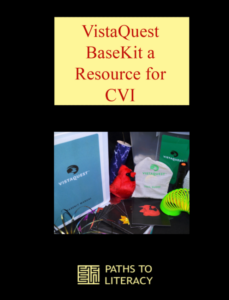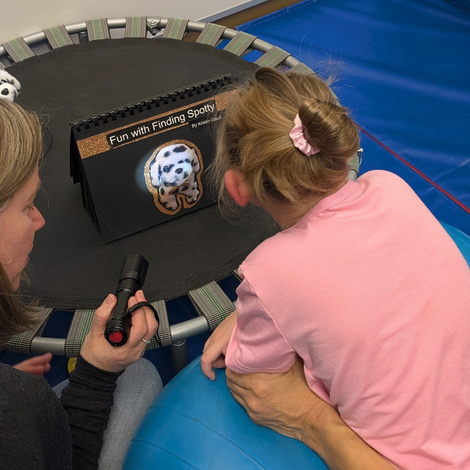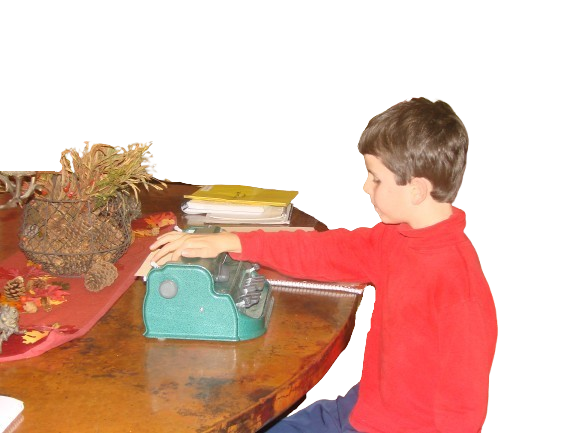Updated: January 2024 with a parent input and student photos
As a Teacher for the Visually Impaired (TVI) for over a decade, I’ve sharpened my professional skills working with students in the Eugene/Springfield school district in Oregon, but my experience working with the visually impaired goes back years earlier. In 2002, my first child was born and 5 years later, my second son. Both boys are visually impaired. Unfortunately, we did not receive advice on helping my first son until his visual challenges became very obvious in kindergarten. As a young mother, I was eager to make sure both my sons had all the support and resources needed to maximize their visual skills and interaction with the complete world. That maternal drive (I now have 3 wonderful children) and desire to help others has drawn me toward the TVI profession and ultimately to a place where I can offer real tools to assist other teachers and parents guiding their child’s growth.

Cortical/Cerebral Visual Impairment is diagnosed when the visual processing areas of the brain are impacted at some level, and the individual has difficulty interpreting what they see. Cortical/Cerebral Visual Impairment (CVI) is the leading cause of childhood blindness and low vision. CVI is a lifelong brain-based visual impairment, caused by damage to the brain’s visual pathways or visual processing areas. We must recognize the complexity of CVI has most certainly been under-reported due to misdiagnoses. It is highly likely that, in the past, CVI was misdiagnosed as any number of low vision or learning disorders. Despite more attention given to CVI over the past few decades, it remains largely under-diagnosed. Results from a 2019 University of Bristol study estimated an astonishing 1 in 30 students has CVI.
As a TVI, and a parent, it is instantly clear that each child is unique and intervention for each student with CVI would be a custom journey.
During grad school, I read Dr. Christine Roman’s first book on CVI, Cortical Visual Impairment: An Approach to Assessment and Intervention. Dr. Roman shared great news for students with CVI: the visual functioning of an individual could improve with the correct, consistent, intervention.
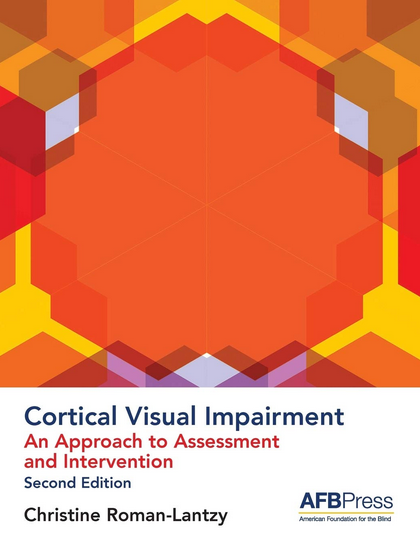
However, as a busy teacher with an unwieldy caseload, I was always battling for more time with all of my students, and my students with CVI were given the least amount of minutes. No wonder I did not see much progress when standard practice was to pop into the classroom once a month! Feeling a bit overwhelmed on how to make a difference, I started taking classes on CVI through Perkins eLearning to help me build a plan I could execute while getting to know the custom needs of each of my students.
I was soon feeling much better about my teaching approach. Then COVID struck. How could I keep progressing with my students when we weren’t in the same room? Was it possible to direct lessons through a parent or guardian that was living in the same “COVID bubble” as my student? Could I do all that over a Zoom call?
I had to think outside the box and try.
I started by writing lesson plans for one student. I outlined activities in detail and provided the items necessary so family members could confidently complete each lesson. I knew where this student landed on the CVI Range, so I could specify the support she needed to do the activities.
Her family was really excited and eagerly followed the plan as I proceeded to add more activities and materials. Through the teamwork of my student, her family, and the intervention plans I provided, we saw progress! This one student case study was the springboard I needed to really think about how I could provide this service for an unlimited number of students.
That’s what led me to create the BaseKit.
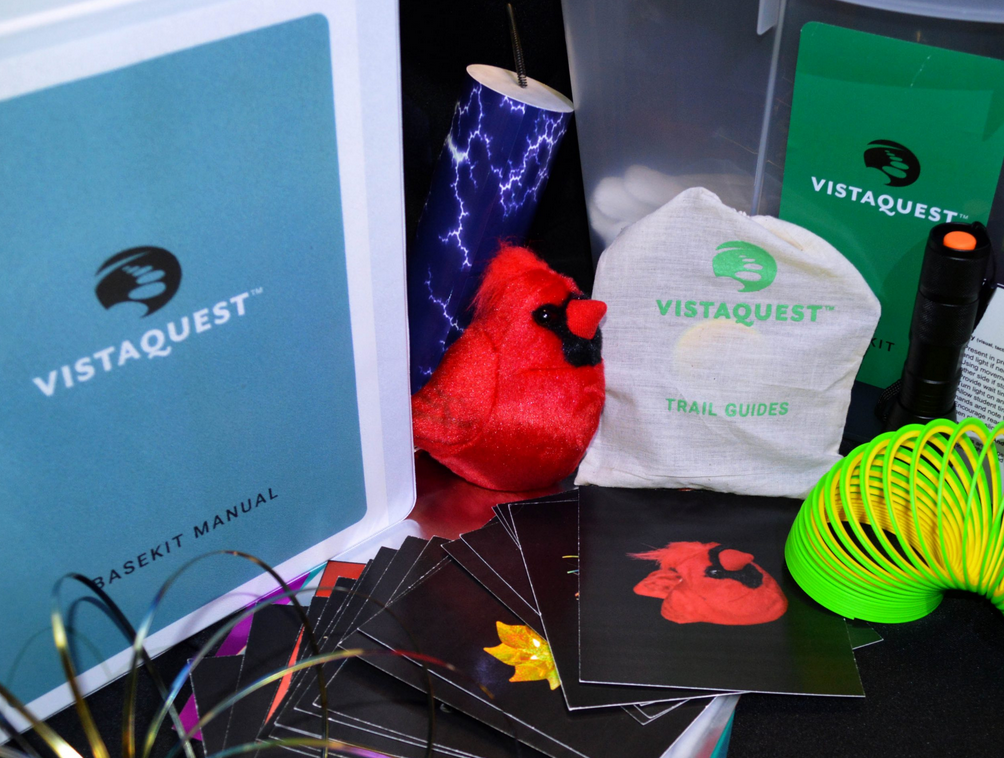
The VistaQuest BaseKit provides unlimited resources for TVIs and families. However, the BaseKit ultimately addresses one main issue: TIME. There simply isn’t enough time for each TVI or parent to read up on CVI research, understand their child’s diagnosis, build a lesson plan specific to each child, gather all the materials, track progress, and on, and on, and on. The BaseKit brings everything together. All the materials, intervention plans, tracking materials, and access to additional research materials if needed is included.
Anyone can use the Basekit
Anyone can use the BaseKit from day one. They don’t need to have knowledge of CVI, although that is helpful. The activities are written in such a way that the adult working with the child will easily be able to track the child’s progress and determine when and how to move on to the next activity. There are an unlimited number of activities provided; enough activities to build a unique plan for each unique child. The BaseKit provides in-depth detail on why each activity is important and how it addresses CVI, but completing that in-depth reading isn’t required to get started. Just get started and you’ll find yourself reading the details as you move along with the child’s experience.
My hope for creating the BaseKit is that ultimately it provides a starting point for each student. A place where the family, the educational team, and the TVI can feel supported. It is not to replace, or be, the whole intervention. It is designed to be another tool in the toolbox we all need as we support more students diagnosed with CVI.
Letter from a parent
The following letter is from a parent who has utilized the BaseKit with their daughter, Caroline, and shows how useful the Basekit has been for her.
“I love how incredibly organized and purposeful everything you’ve put together is.
Caroline has been having a blast with the kit! And really all of us have, my kids and her OT, PT and SLP have all been able to incorporate the tools in the kit into her therapy. Her vision therapist hasn’t been able to see us in awhile, but she will be here next week and I can’t wait to show her.
I also wanted to comment on how much I love the trail guide cards. It is so helpful to be able to access quickly and easily and I can even tell my 5 year old to pick the card to go with the item we’ve picked to practice with.
I think one of Caroline’s absolute favorite things has been the golden pinwheel. I wish I had it on a video. When I set that up beside her while she hung out in her boppy, her face lit up and she opened her mouth big and she was moving her whole body as if she wanted to get it. It was adorable.

Our SLP was super impressed and dove right in reading the cards and got us setup using the little golden music box, flash light and the light up glasses to help her isolate sounds better. She made a little game of it and it’s just amazing what tapping into Caroline’s vision needs can do for allowing her to use her body better. She is so much more motivated and tolerates her stretches and exercises so much better with the right setup and environment. I have been so shocked at how unaware even developmental experts and therapists have been about how CVI impacts kids like Caroline. I want to shout it from the rooftops and show them how much changing the environment and using the right tools changes things for kids like Caroline.
I’m so excited to see her continue making progress with these wonderful tools!”
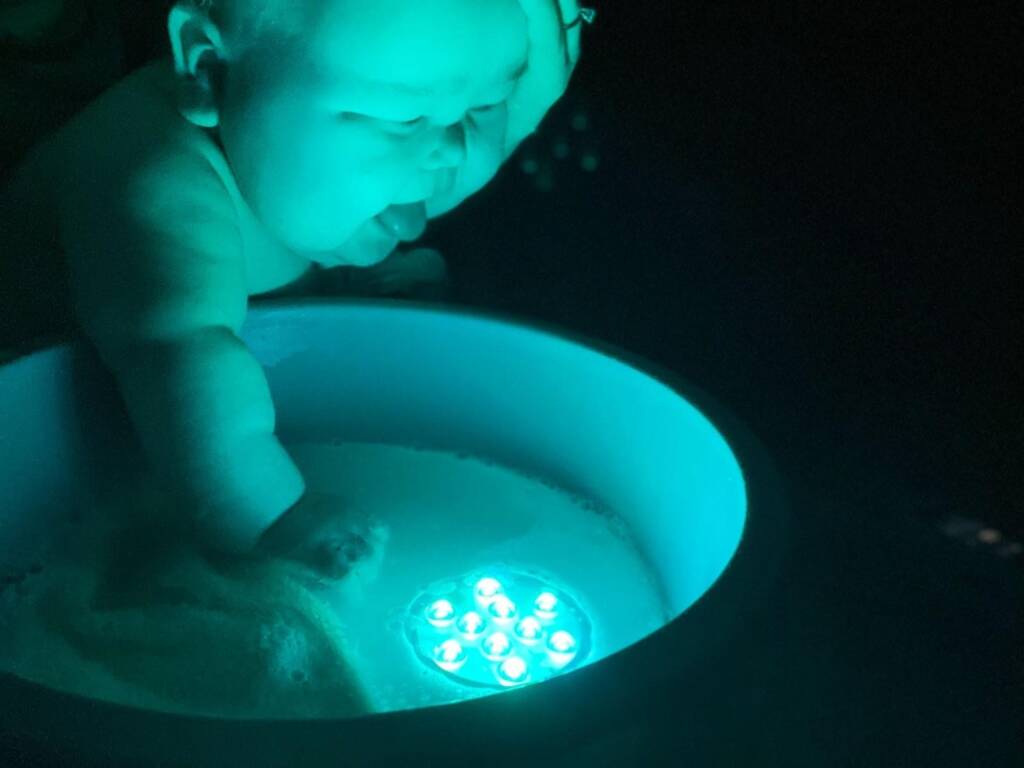
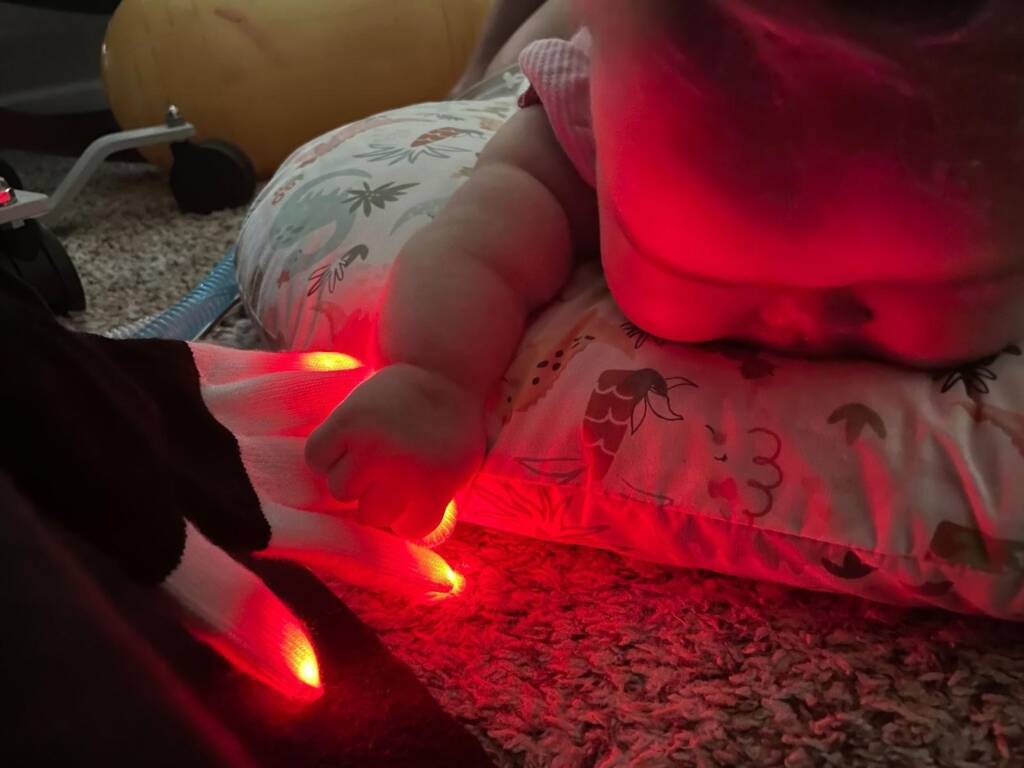
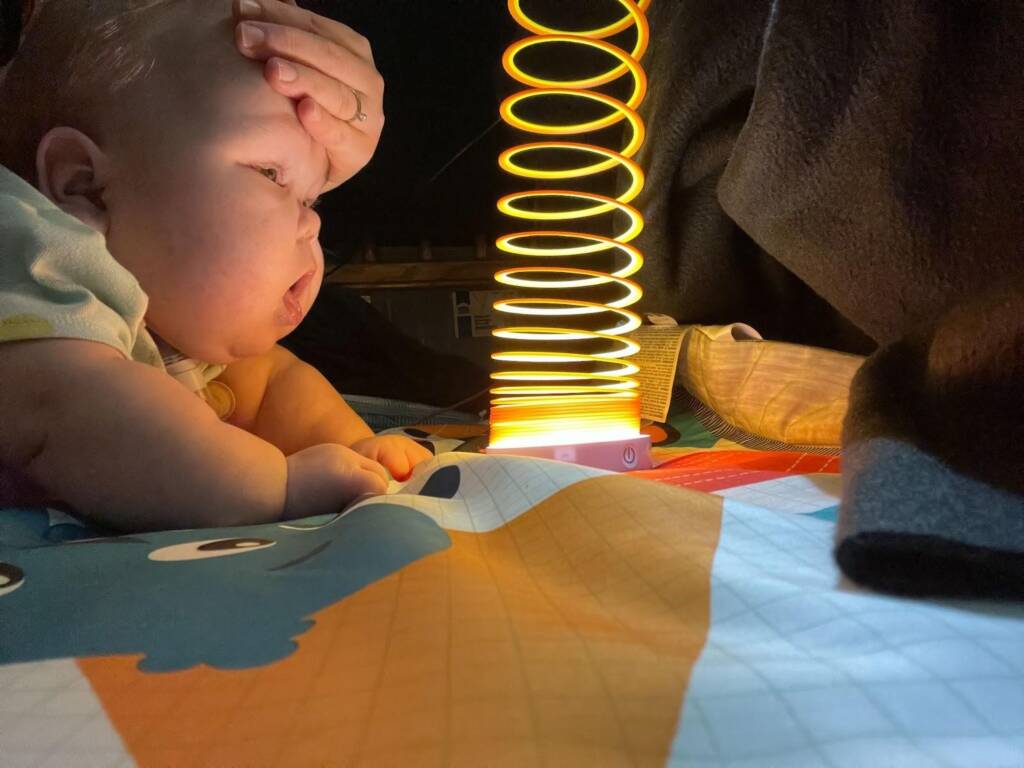
Check out further information on the VistaQuest BaseKit.
Please note: Paths to Literacy does not sell resources or materials. Information about third party providers, products, and services does not constitute an endorsement or recommendation by Perkins School for the Blind. It is the user’s responsibility to verify and investigate providers, products, and services. References to or information regarding commercial products, information, services, manufacturer, or company do not constitute endorsement or recommendation by Perkins or TSBVI.
